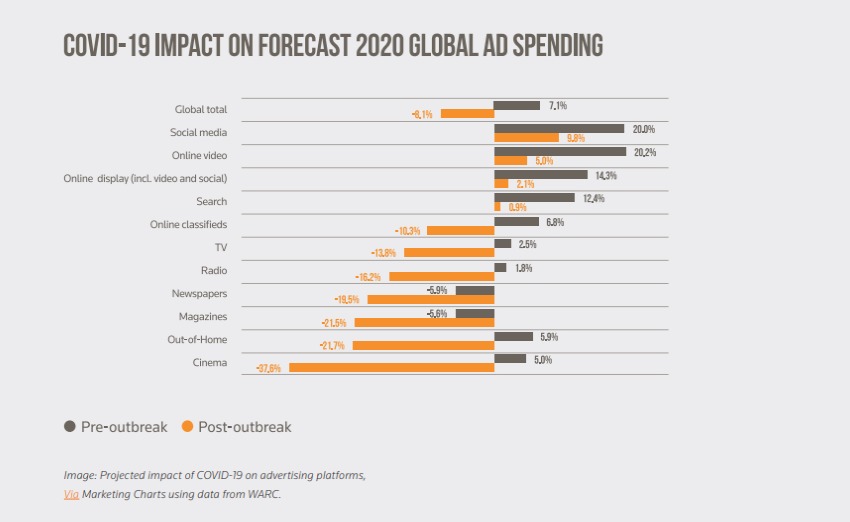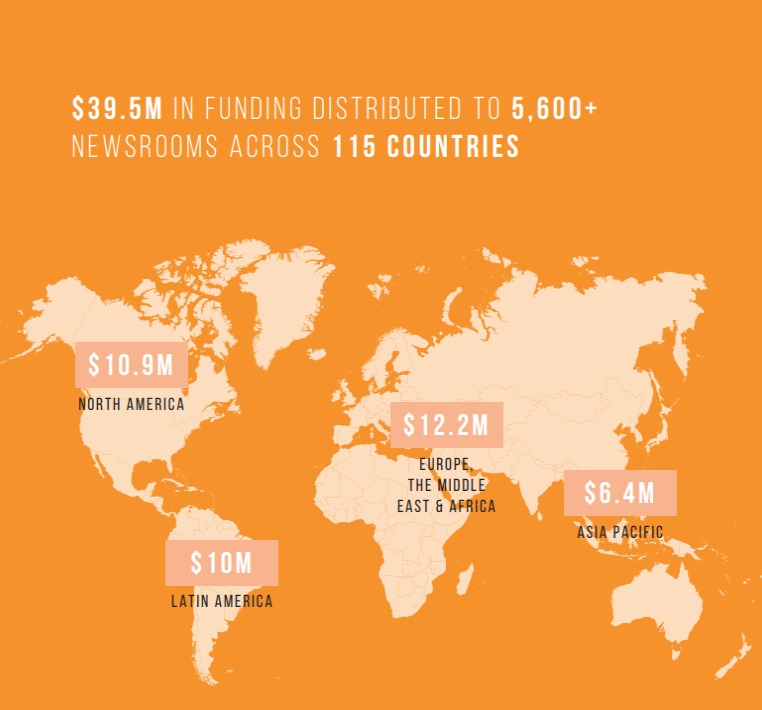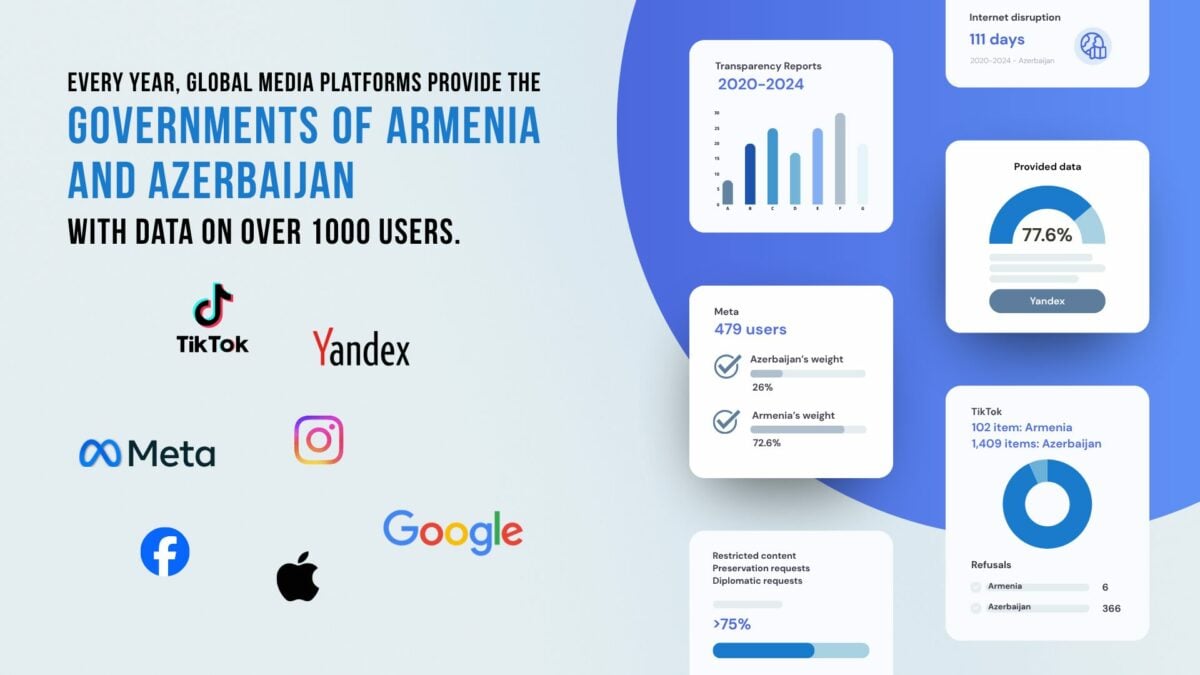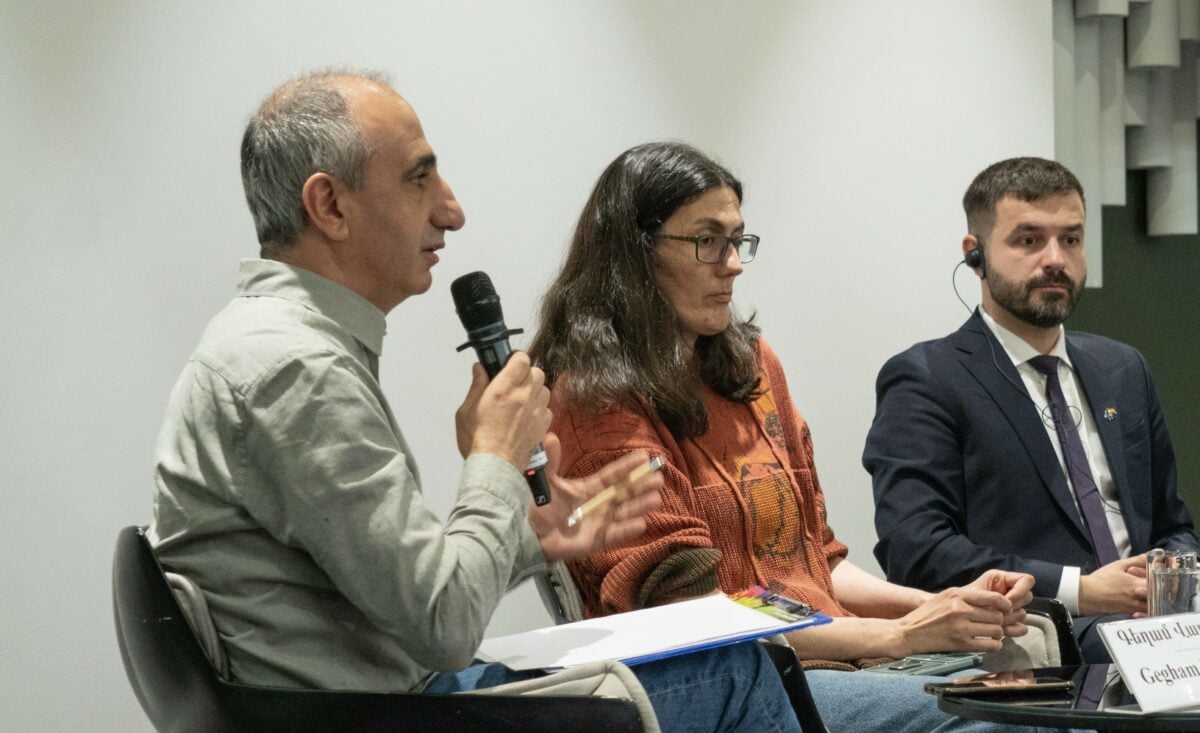The world is discussing how different sectors of the economy will change and enter a new direction after the end of the Covid 19 epidemic. The media is no exception.
The Thomson Reuters Foundation spoke with representatives of 55 media outlets in 26 countries to find out how the coronavirus has affected the quality of their activities and their salaries.
The following results were recorded:
- Almost all the journalists stated that their right to receive information was hindered at different stages of the spread of the epidemic. They were forbidden to cover the work of the government and other state structures on the spot.
- In August alone, Facebook removed 7 million posts about the virus for fake and manipulative content.
- According to the Press Emblem Campaign (PEC) in November, 462 journalists were killed in 56 countries around the world. The highest mortality rate was recorded in Peru – 93 journalists. The reason was the unpreparedness of the journalists to work on the front lines during the infection.
- The share of world advertising in 2020 has decreased by 11․8%.
- As a result of working from home, great challenges have arisen: costs of digital databases, restrictions on working with databases, etc.
- Mental health problems have arisen. It is difficult for journalists to work in isolation and focus on limited topics.
- In many countries, journalists did not have access to hospitals to find out what was going on in those institutions: The death toll from the virus has been largely kept secret.
- They were basically in the risk group. Despite the restrictions, they rushed to hospitals, talked to medical staff, scientists, and political leaders responsible for the issue.
There are no media outlets with no financial losses
In terms of revenue, print media has suffered the most in the world. As a result of the reduction of advertisements, some media outlets have stopped their work or turned to severe reductions in both human resources and salaries.
Although online media recorded a record number of visits in the first phase of the epidemic, media revenues were declining at the same time.
Many experts in the field predicted that the media industry would suffer the greatest losses as a result of the epidemic. After a while, these concerns were considered exaggerated. In the new situation, new tools began to be used, from which the media industry is emerging transformed.
Freelance journalists felt the pain of the financial issues of the media the most, started writing fewer articles and earning less.
The problem, according to experts, is that the media business models that have existed until now are not able to provide stability for the media during such crises. On the other hand, the demand for quality information is sharply increasing along with the epidemic.
Independent and self-funded media platforms are hit the most.
The loss of the international advertising market this year amounted to 70 billion dollars or a decrease of about 11․8% from the total of 517.5 billion (this calculation does not include the volume of US political advertising).

According to the latest forecast of GroupM, the decline in advertising in the world will be 9.9% (including political advertising). For comparison, a year ago the organization predicted a 4-8% increase in advertising flows for 2020.
Statistics show that the traditional media, such as television, radio, newspapers and magazines, have suffered the most. Cinemas have recorded the biggest loss in the world.

Many of the world’s media outlets are now at risk of losing their independence, and the temptation to raise funds from other sources is growing.
For example, due to the closure of two publishing houses in South Africa in May, 17 magazines were no longer published. Two months later, in the same region, Media24 announced the closure of 5 magazines and 2 newspapers.
The story is different in each country, depending on the stage of development of the media. The fact is that no media didn’t experience a loss, thousands of journalists have lost their jobs, the opportunities to work in other media platforms have decreased.
It is obvious that when working from home, the workload of journalists has increased, despite being paid the same amount or less.
For example, a science journalist from Kenya said that their salaries have been cut by half, they were informed about this via email.
A Filipino freelance journalist said that during the epidemic, the editorial offices were only interested in the topic of Covid 19, and due to the restrictions, it was difficult to offer any lengthy article on this topic.
The freelancers also said that many editorial agreements with them were canceled by the editorial offices because there was a high-security risk, they were not able to provide appropriate means, such as transportation, testing, etc. And in some cases, they did not cooperate because of the lack of experience working during the epidemic.
In order for the editorial offices to continue working, the traditional media business models were revised, and journalists were given the task of paying more attention to the creation of video content and digital products.
Moreover, for example, some TV companies and newspapers in Pakistan have not paid their employees for about ten months. In this country, the media already had serious financial problems, but the pandemic deepened them.
Various foundations and non-governmental organizations around the world have provided even greater financial support for the media and independent journalists.

Some courageous media outlets began to take advantage of this unprecedented situation and, in order to survive, turned directly to their audience for subscriptions, membership fees, donations.
Media consultants are urging governments to support independent media and impartial media projects in the coming years, as they believe that information saves lives and that journalists save lives.
There are no media outlets in Armenia closed due to Covid 19, but there are editorial offices that have made cuts. Compared to the international advertising market, we have bigger losses, according to expert data, 20-30%.
The recent Artsakh war also had a major impact on the financial flows of the media in Armenia. Local experts do not despair and believe that from the second half of 2021 advertising flows will slowly be restored.
Gayane Asryan







